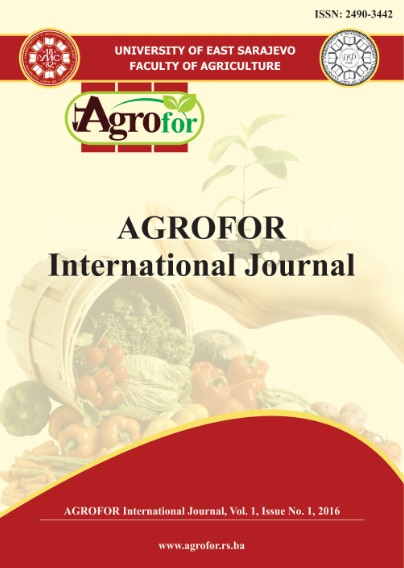EVALUATION OF IMPACT OF EARTHQUAKE ON AGRICULTURE IN NEPAL BASED ON REMOTE SENSING
DOI:
https://doi.org/10.7251/AGRENG1601058SAbstract
The big earthquake happening in April 2015 killed over 9000 people in Nepal. The
effect of earthquake affected not only safety of local people but also agricultural
field. Agricultural economy dominates in income of local people. Therefore,
restoration of agricultural areas is required for improving life of locals. However,
lack of information about agricultural areas is the main problem for local
government to assess and restore damaged agricultural areas. Remote sensing was
applied to access damaged agricultural field due to its advantages in observing
responds of environment without temporal and spatial restriction. Accordingly, the
objective of the study is to evaluate disaster risks based on data from questionnaire
survey, remote sensing and geographic information system (GIS) in agricultural
areas of Nepal. Firstly, we conducted questionnaire survey about thirty indicators
of agriculture-related issues. Moreover, based on USLE (Universal Soil Loss
Equation), soil erosion risk was compared between before and after the earthquake.
To clarify the relation between soil erosion risk and land-use, land-use map was
created based on Worldview-3. Finally, statistical analysis was conducted based on
the collected data. From the results of field survey and analysis, it turned out that
there was little damage on agricultural areas but huge damage on houses and barns
in the villages in the research site. It is attributed to the vulnerable house materials.
Soil erosion risk, that has been little observed in agricultural area, decreased in
forest area and increased in residential area compared to the pre-earthquake time.
From the statistical analysis, multi regression analysis was applied and age of
house and elevation was computed as dominant factors of building damage in the
research site. It is suggested that it is important to improve house materials in the
villages and increase vegetation cover to prevent from further soil erosion in the
research site.

